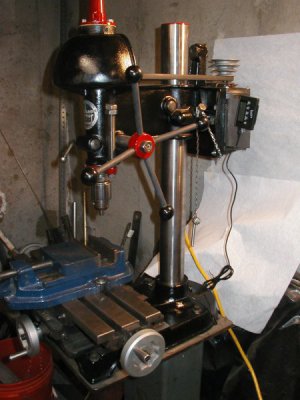Finally completed the lawn mower blade grinder [finished up making a guard for it and mounted the on/off switch so it's not just hanging off the motor], continued from
http://www.hobby-machinist.com/thre...in-your-shop-today.14637/page-229#post-387478
Some people asked how it works, I've annotated some pictures on what the various parts are and how it gets adjusted. The annotations are either red lines or circles with a letter next to them
First, an overall shot with the guard. That triangular thing hanging off to the right side of the picture catches the ground off material, as the grinder spins in reverse from most common grinders.
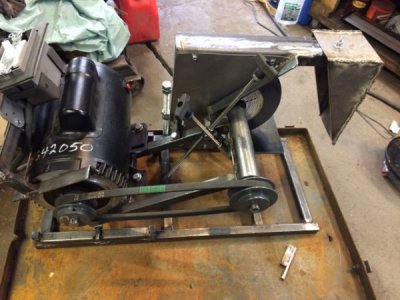
This shows the platform where the blade would slide back and forth to be sharpened (just above "A"). the platform can be adjusted left and right and is held in place with two bolts and fender washers. The platform can be adjusted up and down via the screw "B". These shouldn't need to be adjusted much anymore, as the idea is to get the right end of the grinding platform to be on the centerline of the grinding wheel in the plane that it moves along when adjusting for the wheel being worn down.
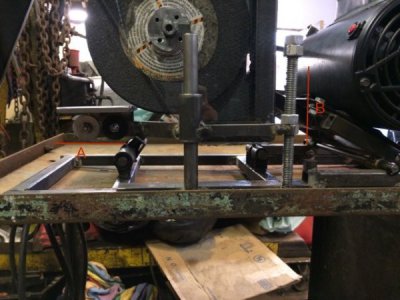
This shot, the "front" of the machine, shows the front support "C" for the grinding wheel axle. It consists of a shaft and next to it (just to the left) is a threaded rod which is used to adjust the height of the grinding wheel from the platform as the grinding wheel wears down. "H" is a pivot point so the platform the grinding axle is part of can rotate a bit as the machine is adjusted for grinding angle and wear on the grinding wheel.
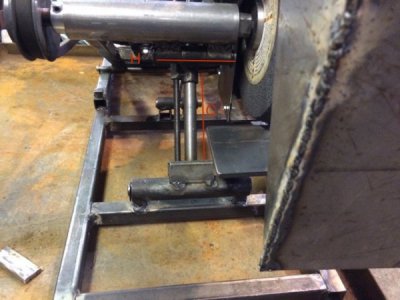
This is the other side of the machine from the first one. The circle labeled "H" is the end of the pivot point from the previous picture, and "C" is the side view of the front support. If you follow the line, you can see the knob used to adjust the wear height of the grinding wheel.
"F" is a threaded rod, used to adjust the grinding angle. "G" is a pivot point which connects "F" to "C", and together with the base, form a triangle so the grinding axle is firmly supported and can't move while the machine is in operation.
"E" is the frame holding the motor and grinding axle together, and it slides along "D" as the grinding axle is adjusting for wear height and grinding angle.
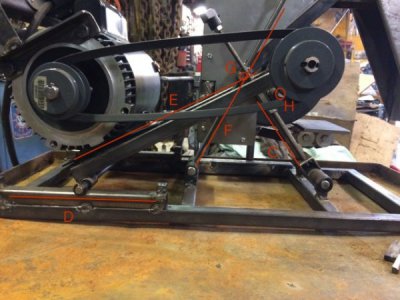
The grinding angle isn't perfectly maintained as you adjust the wear height, because "G" and "H" aren't in the same spot and the other end of "E" doesn't move in the same way as "G" or "H", so the angle will change just a bit as you adjust the machine for the grinding wheel wearing down. Initially I had come up with a more complicated and very top-heavy arrangement that would maintain the grinding angle exactly as it is adjusted for wear, but I decided that it was just to much for what the purpose and precision of the job required.
So far, it's done a good job on the couple of test blades I've used it on, but I'll probably have to work on how the grinding platform "A" connects to it's support, as it will vibrate up a little and then get into the grinding wheel...maybe instead of fender washers, maybe something "C" shaped so the platform is more securely gripped (poorly described, but I think it should work better).






